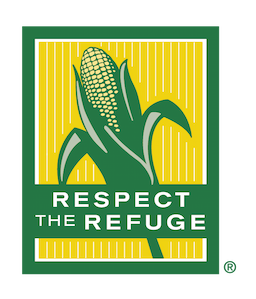3 Reasons Why Your Risk of Corn Disease is Higher Today
March 25, 2019

The way we grow corn today makes it more vulnerable to diseases, says Ray Lello, Fungicides Product Manager at Bayer.
Three major factors that can make corn crops more vulnerable to diseases include the hybrid grown, the tillage strategies used and the weather. Understanding these factors can help protect your crop and your yields.
Corn Disease Risk Factors
High yield genetics
Many growers today plant hybrids with very high yield potential on at least a portion of their acres. “Racehorse hybrids,” as they are sometimes called, are often more susceptible to certain fungi, Lello says. These otherwise high-yielding hybrids “may have strong tolerance to one disease and less tolerance to another,” he notes.
More residue
The number of acres using reduced tillage and/or corn-on-corn rotations have caused more residue to be present. These practices leave more corn residue on the soil surface. The pathogens that cause many common foliar diseases, including gray leaf spot and northern corn leaf blight, survive over the winter in corn residue. When environmental conditions are favorable, those fungi produce spores, which spread to plant leaves by rain splash and air currents. More residue can equal more inoculum.
Changing weather patterns
More frequent heavy rainfall events and higher humidity in some parts of the United States may contribute to increased disease pressure, researchers say. ¹
All of these factors have contributed to an increasing need to manage corn fungal diseases.
Your disease management should always start with hybrid selection, Lello says. “Then it’s about knowing the characteristics of that hybrid, understanding its strengths and weaknesses,” Lello advises. And because your risk of foliar fungal diseases is strongly influenced by hybrid susceptibility, it makes sense to plan a fungicide program when you select seeds, he says. “That way, you’re ready to pull the trigger.”
Other Corn Disease Factors to Be Aware Of
Genetics, tillage and weather aren't the only factors to consider when managing diseases in your corn crops. Other factors that increase your risk of foliar fungal diseases include:
- Susceptible or moderately-resistant hybrids
- No-till, strip-till or conservation tillage
- Continuous corn
- Late planting
- Irrigation
- Disease-favorable weather
- Field history of disease and lodging
- High yield potential ²
Corn Disease Solutions from Bayer
Applying a fungicide such as Delaro® or Stratego® YLD protects your corn from disease with broad-spectrum, long-lasting control.
Before applying any fungicide to your field, please read the entire label for the best possible results and to confirm that the product is effective on the disease you need to control. Not every product is suitable for every situation, and correct application technique will ensure the best results.
For more information on corn disease management solutions, contact a Bayer sales representative or talk with your local retailer.
©2019 Bayer Group. Always read and follow label instructions. Bayer, the Bayer Cross, Delaro and Stratego are registered trademarks of Bayer Group. Delaro and Stratego YLD are not registered in all states. For additional product information, call toll-free 1-866-99-BAYER (1-866-992-2937) or visit our website at www.CropScience.Bayer.us. Bayer CropScience LP, 800 North Lindbergh Blvd. St. Louis, MO 63167.
Sources
1. Coakley, S.M., Scherm, H., Chakroborty, S. “Climate Change and Plant Disease Management.” Annual Review of Phytopathology, 1999 (37:1), 399-426. http://www.annualreviews.org/doi/full/10.1146/annurev.phyto.37.1.399#_i25
2. Hershman, D.E., Vincelli, P., Kaiser, C.A. “Foliar Fungicide Use in Corn and Soybeans.” University of Kentucky College of Agriculture PPFS-GEN-12, 2011. https://plantpathology.ca.uky.edu/files/ppfs-gen-12.pdf






